#echinoderms
Explore tagged Tumblr posts
Text

A nine-armed sea star (Luidia senegalensis) in Indian River Lagoon, Florida, USA
by Arthur Anker
#nine armed sea star#sea stars#starfish#echinoderms#luidia senegalensis#luidia#luidiidae#paxillosida#asteroidea#echinodermata#wildlife: florida#wildlife: usa#wildlife: north america
4K notes
·
View notes
Text
Uncharismatic Fact of the Day
This star isn't far away-- it's just very, very small! Parvulastra parvivipara is the smallest known species of starfish, with adults reaching only 1 cm (0.4 in) in diameter. What's even more interesting, the Tasmanian live-beaing sea star is a self-fertilizing hermaphrodite, and juveniles hatch and develop within their parents gonads before being released, making them ovoviviparous.

(Image: A trio of Tasmanian live-bearing sea stars (Parvulastra parvivipara) by John Eichler)
#tasmanian live-bearing starfish#Valvatida#Asterinidae#starfish#sea stars#echinoderms#invertebrates#uncharismatic facts
1K notes
·
View notes
Text
Wet Beast Wednesday: sea urchins
As I continue the slow grind of covering every living group of echinoderms for this series, it was inevitable that I would eventually encounter the only echinoderm I've actually studied. Sea urchins are among the most iconic of marine invertebrates, but many people just think of them as part of the scenery. I'm here to show you that there's more to these creatures than just being spiny lumps on a rock.

(Image: a purple sea urchin (Strongylocentrotus purpuratus) being held in someone's hand. It is a round, globular animal with a dark purple color. Light purple spines emerge from it all over its body, with the longest being around the middle. End ID)

(image: a long-spined sea urchin (Diadema savignyi). It is a black sea urchin with spines longer than its diameter. End ID)
Urchin is an old-fashioned word for hedgehog, and sea hedgehog is a fitting name for these round, spiny animals. Sea urchins tend to be fairly small, with a diameter of 3 - 10 cm (1 - 4 in), though some species have very long spines that make them seem larger. The main body of an urchin is round and enclosed in a (usually) hard shell called a test made of calcium carbonate. The test is covered with a slayer of skin and muscle that controls the spines and small, pincer-like structures called pedicellaria. Within the test are the internal organs. As with other echinoderms, sea urchins are radially symmetrical as adults, with five segments arranged around the center like pizza slices. The two main body holes are found on the top and bottom of the animals where the segments converge. At the bottom is the mouth and at the top is the anus. Each segment also has a hole near the anus used to release gametes and one will have a larger pore called the madreporite, which is used to control the amount of water within the urchin's body. The mouth is a unique structure known as Aristotle's lantern, consisting of five tooth-like structures (one for each body segment) that interlock together and sharpen themselves. Behind the teeth is a rasping tongue.

(image: a close-up of an urchin's mouth, showing the Aristotle's lantern. It is a hole surrounded by a fleshy lip. Five spade-shaped teeth are emerging from the edge of the hole. End ID)
Internally, most of the body is taken up by the digestive tract and water vascular system. The digestive system lacks a stomach, with the esophagus attaching directly to the small intestine. The digestive tract forms a loop as it passes through the body. The water vascular system uses seawater to form hydrostatic pressure that moves the tube feet. All starfish, urchins, and sea cucumbers have tube feet, small, transparent, tentacle-like structures they use for movement. Tube feet are hollow and retracted into pores on the skin normally. To be used, they have to be inflated with water, which makes them stick out of the body, where they can be controlled with muscles. Tube feet end in suction cups that can be used to grab into structures around them. Seawater drawn in through the madreporite serves as the source of pressure needed for the tube feet to function. In urchins, tube feet cover the body and are used for locomotion, moving food to the mouth, and moving objects on or off the body. The main body cavity is filled with circulatory fluid that uses special cells to move oxygen and nutrients around the body. The nervous system is simple, consisting of a central nerve ring around the esophagus that branches into nerves that connect to the rest of the body. Urchins have no eyes (except for the family Diadematidae, which have eyespots), but are sensitive to light. The gonads are usually small, but during mating season they can swell to fill much of the body cavity.

(Image: a drawn diagram showing a cross-section of a sea urchin, with the different organs and body parts labeled. End ID. Source)
Sea urchins are found in oceans worldwide, from intertidal zones to the deep sea and the tropics to the poles. They are bottom-dwellers who feed primarily on algae, which they scrape up with their teeth. However, they will also take a variety of food, including carrion, aquatic plants, and other slow-moving or sessile animals like sponges, polyps, bivalves, worms, and sea cucumbers. Urchins can play a key role in regulating algae populations through their ecosystems, but they also rely on predators to keep from overeating necessary algae. Famously, California's kelp forests were almost destroyed by urchins eating the kelp after their primary predator, sea otters, were driven to near extinction. Urchin's primary defense against predators is their hard tests and spines. As most of the edible portion of the urchin is within the test, predators have to get through both layers of defense first. The spines are hollow and each can be moved independently of each other, allowing them to be positioned toward a threat. Many species contain venom within their spines as an added layer of defense. This venom is rarely dangerous to humans, but can cause swelling and painful reactions. Another layer of defense is the pedicellaria, which are good at removing small animals and parasites from the skin. The flower urchin, Toxopneustes pileolus, has modified its pedicellaria into flower-like structures that extend beyond the spines and can deliver a sting that can be fatal to humans.

(Image: a flower urchin. It is a pinkish urchin covered with flower-like structures that extend to the length of the spines. It has placed some bits of shells on top of it. End ID)
Sea urchins possess distinct males and females, though the differences are internal, making it impossible to tell which is which based on visual examination. During mating seasons, the gonads swell as they generate gametes. Urchins tend to reproduce in groups at synchronized times (possibly correlated with the phases of the moon in shallow-water species) to maximize the possibility of fertilization. When ready to mate, the gametes are squeezed to empty their contents through the genital pores and into the water column. Sperm must find egg in the water to fertilize it. Most sea urchins provide no parental care, but in some species, the female will retain the eggs in her spines to protect them. The eggs hatch into bilaterally symmetrical larvae called plutei that drift with the plankton. As they develop, a section of the larvae will develop into a radially symmetrical adult rudiment. This piece will eventually break off and become the juvenile urchin while the rest of the larva dies. Because echinoderms start out as bilaterally symmetrical larvae, we can infer that they developed from bilaterally symmetrical ancestors and the radial symmetry of adults is a more recent development.

(image: a series of photos showing the embryological development of a sea urchin from a single cell to a cluster of cells, to a bell-like structure, to growing several arms, to the eventual adult developing and breaking off. End ID. Source)
Fossils show that the oldest sea urchins had large, club-like spines that they walked on, with the modern spines being a later development. Most of those urchins died out with the dinosaurs, leaving the pencil urchins of order Cicaroida as the only living members. All other living urchins are Part of the clade Euechinoidea. Amongst them, there are still some oddballs, known as the irregular urchins of clade Irregularia. These urchins have moved away from radial symmetry, with less symmetrical segments and the anus and mouth moving from being on the top and bottom to being on the sides in the heart urchins. Heart urchins have gone from bilateral symmetry to radial symmetry and are now going back to bilateral symmetry. Heart urchin mouths don't have an Aristotle's lantern. Instead, they use strands of mucus to capture food and cilia to pull the strands back inside. Sand dollars, also known as sea cookies or sea biscuits, are also in this clade. These are flattened urchins with short and very fin spines that resemble velvet. They are burrowers who spend much of their time buried under sand and as such are rarely seen alive. The name sand dollar comes from their tests, which are similar to old dollar coins and can often be found washed up on beaches. While still radially symmetrical, sand dollars also have a secondary form of bilateral symmetry, with a distinct front and back end that often look different. Irregular sea urchins also tend to have fewer gonads and associated pores than regular sea urchins.

(image: a red pencil urchin (Heterocentrotus mamillatus) nestled among coral. Instead of spines, it has a series of long, thick, red clubs. End ID)

(image: a purple heart urchin (Spatangus purpureus). It is an urchin elongated on one direction and with a few rows of long spines amongst short ones. On the surface facing the camera is a large hole that could be the mouth or the anus. End ID)

(image: a group of irregular sand dollars (Dendraster excentricus) partially buried in the sand. They are round, flat animals with a velvety covering of tiny spines. The are sticking out of the sand. End ID)
Sea urchins have been known to humans for as long as people have lived near the ocean. Stings can occur when people step on them and can cause pain and irritation, but are rarely medically significant. That being said, some people can have allergies to the venom, which could be a big problem. Spines left in the wound should be removed, as they can continue injecting venom. Urchins are a food source for people around the world, specifically the gonads, which are the only meaty part of the animal. The gonads are often marketed as roe or corals and can be eaten raw or cooked. Urchins are also used as a model organism in embryology due to the interesting and well-studied nature of their larval development. Urchins are vulnerable to pollution, habitat loss, and over-predation. Ocean acidification due to climate change poses a major threat to them, as it reduces the quality of their tests.

(image: tow sea urchins served as food. They are upside-down with the bottoms removed. The gonads are visible within as five orange, spongy structures that take up most of the body cavity. End ID)
#wet beast wednesday#sea urchin#urchin#sea urchins#echinoderms#invertebrates#invertiblr#sand dollar#heart urchin#pencil urchin#marine biology#marine life#biology#zoology#ecology#animal facts#informative#educational#image described
829 notes
·
View notes
Text

Lehrbuch der Zoologie - Otto Schmeil - 1930 - via e-rara
419 notes
·
View notes
Text
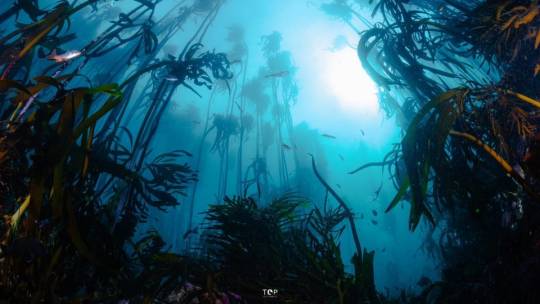
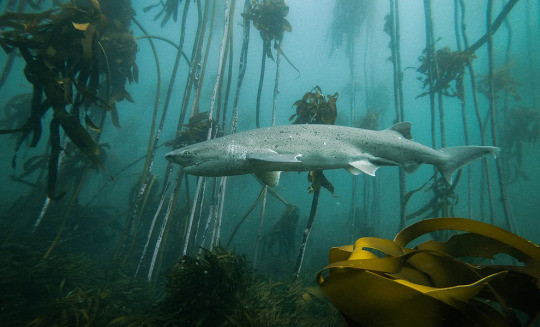
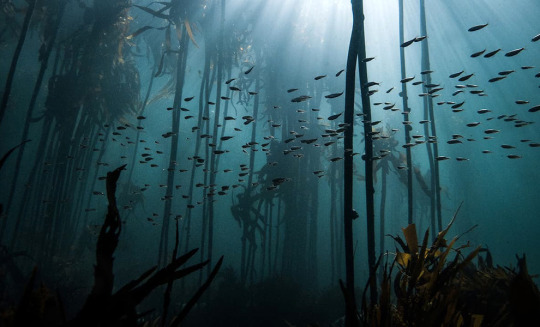

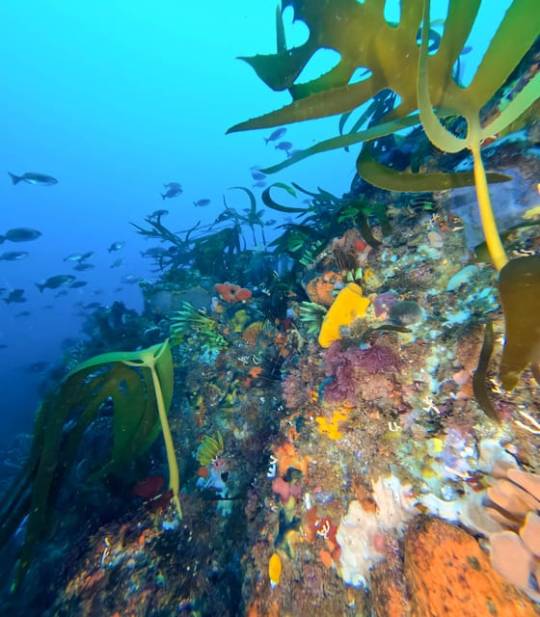


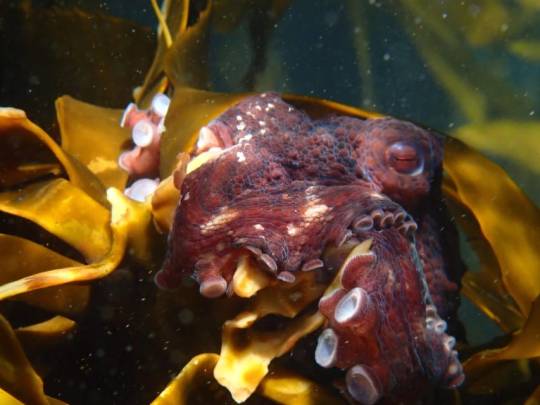

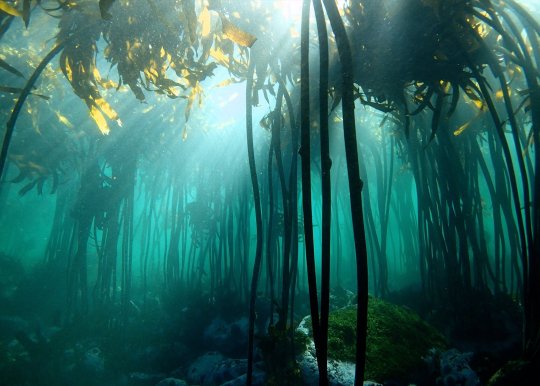
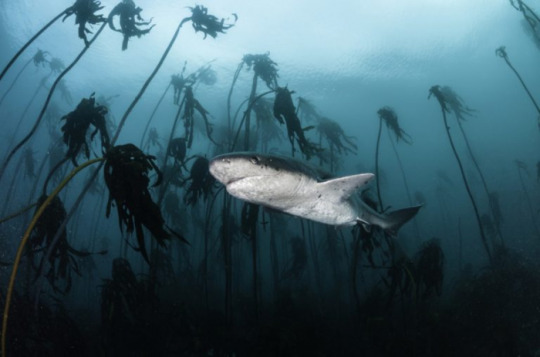

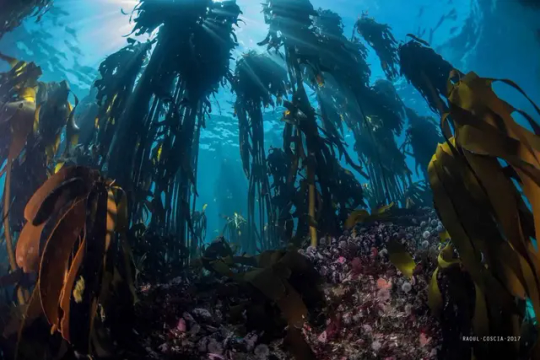
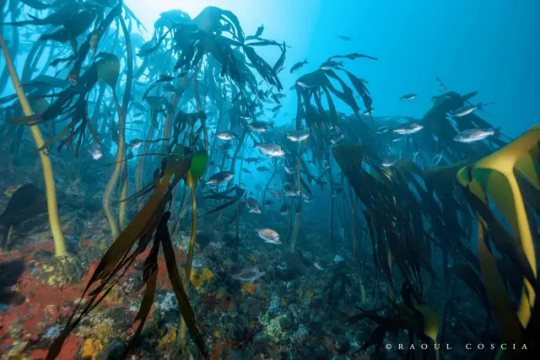
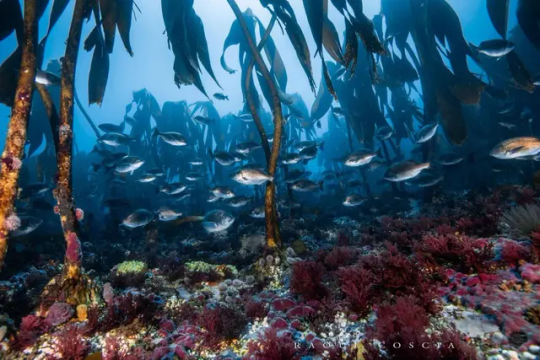
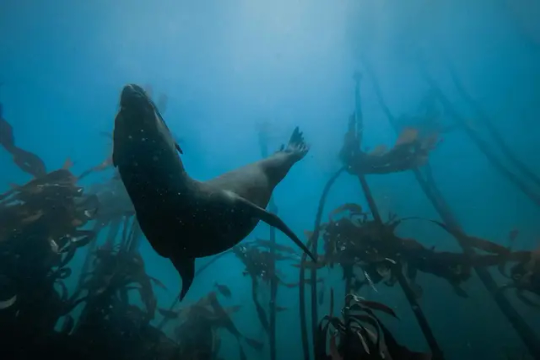
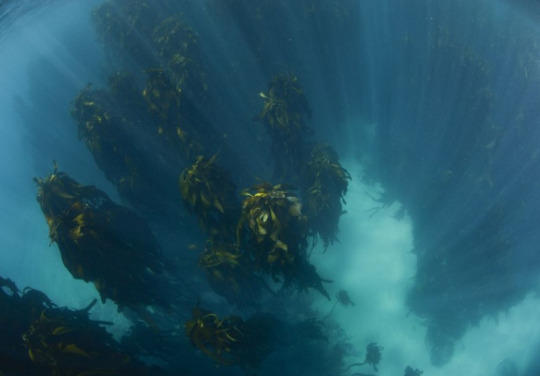
Африканский морской лес назван одним из 7 чудес света.
Агентство Bloomberg опубликовало свой список новых семи чудес света, в котором особо отмечены леса водорослей, известные также как Великий африканский морской лес.
Леса водорослей расположены всего в 16 км от Кейптауна, Южная Африка, это разнообразная и удивительная экосистема.Он состоит из келпа, особого вида бурых морских водорослей, которые вырастают до очень больших размеров. Они растут на дне океана и могут достигать в длину 46 метров. Эти водоросли хорошо растут на мелководье в чистой воде при низких температурах.
По мере роста водоросли формируются в то, что мы называем лесом. Африканский морской лес выполняет ту же функцию, что и их калифорнийский аналог, предоставляя пищу и убежище для множества морских обитателей, от промысловых видов, таких как омары, раки и морские ушки, до крупных хищников, таких как капский морской котик. Возможно, самым захватывающим аспектом Большого африканского морского леса является разнообразие видов акул, которые называют эти псевдодревесные среды домом.Этот лес являются домом для ряда редко встречающихся видов акул, включая харизматичную пижамную кошачью акулу и пугливую пятнистую овражную акулу. Между африканскими морскими лесами находятся потрясающие рифы с оврагами и протоками.
African Sea Forest Named One of the 7 Wonders of the World.
Bloomberg has released its list of the New Seven Wonders of the World, and the kelp forests, also known as the Great African Sea Forest, are a special mention.
Located just 10 miles from Cape Town, South Africa, the kelp forests are a diverse and fascinating ecosystem. They are made up of kelp, a type of brown seaweed that grows to very large sizes. They grow on the ocean floor and can reach lengths of up to 150 feet. These seaweeds thrive in shallow, clear waters at low temperatures.
As the seaweeds grow, they form what we call a forest. The African Sea Forest serves a similar function to its Californian counterpart, providing food and shelter for a variety of marine life, from game species like lobsters, crayfish, and abalone to large predators like the Cape fur seal. Perhaps the most fascinating aspect of the Great African Sea Forest is the diversity of shark species that call these pseudo-arboreal environments home. The forest is home to a number of rarely seen shark species, including the charismatic pyjama catshark and the shy spotted gully shark. Between the African Sea Forests are stunning reefs with gullies and channels.
Источник://www.getyourguide.ru/keiptaun-l103/keiptaun-snorkling-s-gidom-v-bol-shom-afrikanskom-morskom-lesu-t433018/, /www. epochtimes.ru/afrikanskij-morskoj-les-nazvan-odnim-iz-7-chudes-sveta-99111276/?utm_referrer=https%3A%2F%2F www.google. com %2F, //apexpredators.com/ru/kelp-forest-dive/, /klau.club/23406-les-vodoroslej.html, //www.myguidecapetown.com/ru/Опыт/Кейптаун-снорклинг-с-гидом-в-Большом-африканском-морском-лесу.
#South Africa#Cape Town#video#marine life#nature#Great African Sea Forest#seaweed#kelp#aquatic animals#underwater#echinoderms#starfish#shark#ocean#reef#sand#animal photography#Южная Африка#Кейптаун#видео#фауна#природа#океан#иглокожие#морская звезда#водоросли#келп#риф#песок#акула
433 notes
·
View notes
Text
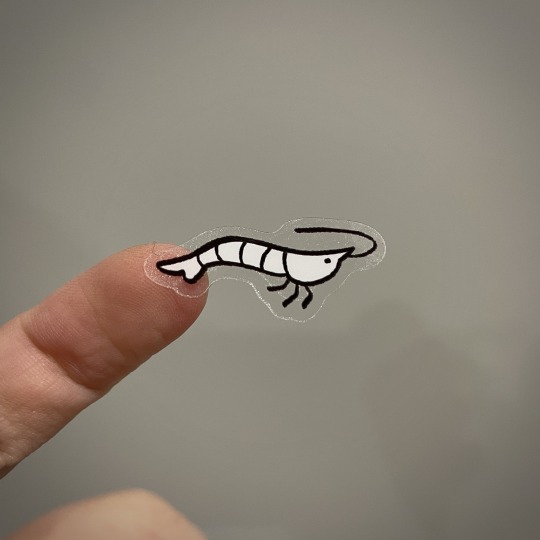
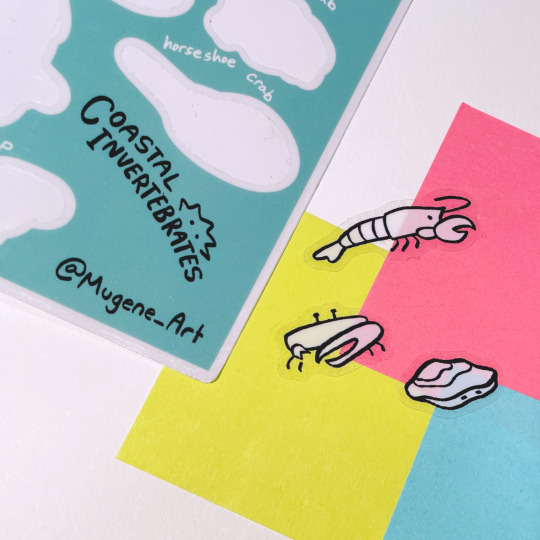


#marine invertebrates#marine biology#invertebrates#shrimp#horseshoe crab#nudibranch#coral#squid#sea anemone#cnidarians#echinoderms#crustacean#mollusk#molluscs#tunicate#sea creatures#sea animals#biology#sticker sheet#stickers#clear stickers#artists on etsy#artists on tumblr#mu's wares
897 notes
·
View notes
Text
Just got jealous of a starfish with an absolute dump truck of an ass
#marine biology#starfish#echinoderms#marine science#ocean#love to sea it#science#sea creatures#sea life#underwater#marine life#ocean critters#sea critters#oceanography
122 notes
·
View notes
Text

[ID: a digital illustration of a wide orange starfish surrounded by stylized purple sea urchins, water, sand, and stone. End]
#00192 BAT STAR
Patiria miniata
PHYLUM ECHINODERMATA, CLASS ASTEROIDEA
An intertidal starfish found along the Pacific coast from Alaska to Mexico. It eats both living plants and animals as well as dead detritus - it secretes digestive juices to liquefy food sources before ingesting them.
#copypasting from a creature club document. idk if I’ll keep up w that formatting but might be nice ? :-)#bat star#starfish#sea star#marine life#echinoderms#invertebrate
190 notes
·
View notes
Text
A true alien of the reef! This is a particularly large basket star, likely Astrophyton muricatum, with all its delicate branching appendages outstretched to feed! Unlike other sea stars that are surprisingly active predators, basket stars rely on their dense thicket of arms to trap organic particles and plankton that are carried near.
#basket star#echinoderm#astrophyton spp#marine biology#marine bio#biology#animals#nature#marine science#invertebrates#women in science#women in stem#zoology#diving#marine conservation#scuba#ocean life#ocean#echinoderms#sea stars
82 notes
·
View notes
Text
#poll#wet beast wednesday#invertibrates#cnidarians#soft coral#cephalopods#chordata#echinoderms#chimera#shark#fish#deep sea fish#scorpionfish#ctenophore#marine animals#marine life#marine biology#spooky#spooky season
99 notes
·
View notes
Text

Lets snuggle in the cold ocean with mama
#with mama#mamaposting#bay sea star#sea star#echinoderms#those stars are actually about the same age
53 notes
·
View notes
Text

A purple sunstar (Solaster endeca) in the White Sea
by Alexander Semenov
#purple sunstar#starfish#echinoderms#solarster endeca#solaster#solasteridae#Valvatida#Asteroidea#echinodermata#wildlife: misc
954 notes
·
View notes
Text
Uncharismatic Fact of the Day
Many animals have vastly different ways of dealing with predators; camoflague, threat displays, spines and shells. But perhaps none are so extreme as the sand dollar. When a sand dollar larvae (aka a pluteus) senses a predatory fish is in the area, it will split itself into two identical clones, each about 2/3 the size of the original! This process takes up to 24 hours, so it may not be as usual for immediate threats, but it can make the pluteus harder to spot, and give predators an extra target to aim for while they make a getaway.

(Image: An eccentric sand dollar (Dendraster excentricus) by Charlotte Seid)
#eccentric sand dollar#pacific sand dollar#Clypeasteroida#sand dollars#sea urchins#echinoderms#invertebrates#uncharismatic facts
284 notes
·
View notes
Text
Wet Beast Wednesday: starfish
This week's Wet Beast Wednesday is going to be stellar, as we're reaching for the stars and talking about starfish. Also known as sea stars and asteroids, these echinoderms are a classic in tidepools and touch tanks, so much so that many people don't think much about them. If that's you, you're missing a lot, since there's plenty of interesting things to learn about our radially symmetrical brethren.

(Image: a common starfish (Asterias rubens) resting on sand, seen from above. It is a star-shaped animal with five distinct rays connecting at the base. Its body is orangeish, with small white slumps all over its surface. End ID)
Starfish are echinoderms of the class Asteroidea and when I called them our brethren, I wasn't entirely kidding. Echinoderms are duterostomes, the clade of bilaterally symmetrical animals whose anus forms before the mouth while in embryo. Chordates, which include humans, are also duterostomes. This means you are more closely related to starfish than you are to arthropods, molluscs, or various worms. As with the other echinoderms, starfish are radially symmetrical as adults, but bilaterally symmetrical as larvae, indicating that they evolved from bilaterally symmetrical ancestors. Starfish should not be confused with brittle stars and basket stars (which you can read about here), though they do have the same common ancestor.

I know what you're thinking and shame on you. (Image: the granulated starfish (Choriaster granulatus). It has short rays with rounded heads that have vertical slits on the tips. Its body is a reddish-orange with hard markings, but the tips of the rays are a more pale color. End ID)
Starfish consist of a central disc with appendages called arms or rays extending from it. The term ray is often preferred because they are not actually limbs. They are flexible, though, and are used in locomotion and object manipulation. Most species have five rays, but some can have more. The number of rays is usually a multiple of five (and can reach up to 50 in Labidiaster annulatus), but species with other numbers of rays do exist. The underside of the rays are lined with rows of tube feet. These hollow tubes can be filled with water to extend out of the body and are maneuvered with a complex system of muscles. Each tube foot can be individually controlled and a starfish can have hundreds of them. Tube feet are used for locomotion and object manipulation. While the ends are often suction-cup shaped, they attach to objects using chemical adhesives rather than suction. Tube feet are used to drag the starfish forward and they typically will have one ray that points in the direction they are moving, possibly a remnant of their bilaterally symmetrical ancestors having a front end. Starfish typically move fairly slowly, with about 15 cm (6 in) a minute being a typical top speed. There are exceptions, though, with Luidia foliolata being able to reach almost 3 m (9 ft) per minute. Tube feet are also filled with sensory cells to help the starfish examine its environment. The flexible arms also help starfish flip themselves over if they end up upside down.

(Image: a starfish of the order Brisingida. It is orange and has numerous very long and flexible arms that are held up in the water column. The arms are covered with elongated spiny protrusions used to filter feed. End ID)
The central disc contains the mouth at the center that is opened and closed with a sphincter. The moth leads into a short esophagus which leads to a stomach divided into two segments: the larger cardiac stomach and smaller pyloric stomach. In primitive starfish, food is swallowed hole and passed to the cardiac stomach, where digestion begins, then passed to the pyloric stomach where digestion finishes. In most species, however, the cardiac stomach has been adapted to be ejected out through the mouth to engulf prey and begin digesting it outside of the body, passing broken-down food into the internal pyloric stomach. This allows starfish to consume prey considerably larger than they are. Starfish famously can consume bivalves by using their arms and tube feet to pry the shellfish open and eject their stomachs into the shell. Not all starfish are carnivores. Many will feed partially or totally on algae and detritus and some have adapted to be filter feeders that use their rays to catch plankton and carry it to their mouths. Some species use modified pedicellariae to capture small fish and crustaceans. Pedicellariae are pincer-like structures found on the skin of some species of starfish that have a number of uses, including aiding in feeding and removing objects and small animals from the starfish.

(Image: a close-up of the underside of a starfish. On the bottom of each ray is a channel filled with tube feet, which appear as small, reddish tubes with sucker-shaped endings. The channels meet in the middle where the mouth is visible as a small hole. End ID)
Internally, the starfish is supported by an endoskeleton made of honeycomb-like calcite structures called ossicles. Most ossicles fit together to form a protective yet flexible shell on the top of the starfish. Ossicles are often the only parts of a starfish that fossilize, leaving starfish with a sparse fossil record. Beneath the ossicles are the digestive system (which extends into the arms) as well as the nervous system and water vascular system. The nervous system consists of a nerve ring that surrounds the mouth and branches off into radial nerves that run down the rays. A par of nerve nets run under the skin and in the water vascular system. Starfish are known to sense by touch, smell, and chemoreception, and though they do not have eyes, they do have light-sensitive eyespots at the tips of the rays. The water vascular system is used both for circulation and movement. Water is drawn into the body through a modified ossicle called the madreporite and into a series of canals that run through the body. Muscular action can open or close valves leading to the tube arms. This causes the tube arms to either fill with water and extend, or lose water and contract. The water vascular system is also used to dispose of some waste and to circulate oxygen through the body. The circulatory system (consisting of a heart and 3 ring canals) does not circulate oxygen, only nutrients. Starfish hearts beat at an average of 6 times per minute.

(Image: a sunflower star (Pycnopodia helianthoides) on the seafloor. It is a large, reddish-orange starfish with a large central disc and 20 long, slender arms. End ID)
The majority of starfish are dioecious, meaning they have separate males and females, but some species are hermaphroditic, either simultaneous (both male and female gonads at the same time) or sequential (will transition from one sex to another). Paired gonads are located at the base of each arm and release gametes through gonopores on the discs. Some species will engage in behavior where a male will climb on top of the female and overlap her arms, then they will release gametes together to maximize the chance of fertilization. Most fertilized eggs are released into the water, but some will be placed under rocks and some species will brood the eggs using species structures. Brooding species have larger eggs with lots of yolk that skip the larval stage and hatch as small adults. Most species hatch into a planktonic larval stage called the scaphularia, which is equivalent to the blastula stage of vertebrate embryo development. The scaphularia then develops into a bipinnaria, which has bands of cillia on its body used for movement and feeding, as well as stubby rays. The next larval stage is the brachiolaria, which has more developed rays and attaches itself to the substrate through a stalk. Up until now, the larva has been bilaterally symmetrical, but this is where that changes via a radical metamorphosis. The body rearranges itself so that the left side of the brachiolara becomes the bottom of the starfish and the right side becomes the top. The body cavities are rearranged into the circulatory and water vascular system while the gut, mouth, and anus rearrange themselves. The starfish is now a tiny (usually 1 millimeter) radially symmetrical adult that drops off of the stalk.

(Image: a starfish's larval development from an egg through an amorphous, tentacled brachiolara larva, and to a half- developed juvenile starfish that has not yet formed distinct rays. End ID)
Starfish are famous for their regenerative ability. A starfish that loses rays to predators can grow them back in a process that can take over a year. In many species, a starfish split in half can regenerate into two complete starfish. There are different types of regeneration and different species are capable of different types. The most common is unidirectional regeneration, where a starfish needs the majority of its disc to regenerate. If it is cut in half, only the the piece with over half of the disc will regenerate. Rarer is disc-dependent bidirectional regeneration. This allows a severed ray with at least part of the disc attached to regenerate into a full starfish. Part of the central disc is needed to provide access to the digestive system and mouth. The rarest and most extensive form is disc-independent bidirectional regeneration. This allows a severed ray with none of the original disc to regenerate a full starfish. The severed arm must rely on stored nutrients until the digestive tract regenerates, so only very healthy limbs will last long enough to do so.

(Image: a red starfish regenerating. It has three large, normal rays ans three very small rays branching off of the disc. End ID)
Regeneration occurs in three stages. The first is the repair stage, where the initial wound is healed and the body prepares to the generation of new tissues. This stage is where the starfish is at its most vulnerable to infection or succumbing to the injury. Next is the early regenerative phase, where undifferentiated cells and body structures move toward the regenerating surface. Finally is the advanced regenerative phase, where massive cell replication and differentiation occurs. During this phase, the new ray will grow as a miniature version of the originals and will gradually enlarge until reaching the adult size. This is a vastly oversimplified explanation of regeneration because most of it is cell biology that goes way over my head. Severed rays regrowing a body are sometimes called comets due to having one ray significantly larger than the others. Some species of starfish will deliberately drop a ray if threatened by a predator. This is called autotomy and relies on the predator favoring the easy meal of the dropped body part over continuing to attack the main body.

(image: a comet starfish attached to a glass tank wall, seen from below. It looks like a normal starfish, but with one disproportionately large ray. End ID
Starfish can use their regenerative powers for asexual reproduction. Certain species will engage in fission, splitting themselves apart so both parts will regrow into a full starfish. Some will split off a large section of disc while others can drop a single ray to regenerate. Fission seems to have evolved independently in multiple lineages and presents differently in different species. Some species will only do it as young, while others will do it their entire life. Some species will rarely do it, while others will drop limbs throughout their lives. In at least once species, only males will split themselves. Females of the species Nepanthia belcheri can split into two males. Asexual reproduction usually occurs in adults, but some species can reproduce as larvae in good conditions, either through fission or budding off clones.

(Image: a chocolate chip starfish (Protoreaster nodosus) on sand. It is a five-rayed, white starfish with multiple prominent black spines surrounded by red skin on its top end. End ID)
Starfish are found in every ocean and from the intertidal zone to the abyssal depths. Because they do not have the ability to regulate their internal salt content, starfish are not found in fresh water and only relatively few of their nearly 2000 species live in brackish water. Being relatively large generalist predators or omnivores generally occupying the middle of the food chain, starfish are often keystone species for their environments. Fun fact: the term keystone species was originally used to describe a starfish. Starfish play a large role in regulating benthic micro- and macro-organism densities while also being a food source for larger animals. Places where starfish have been removed have seen population explosions of bivalves and other prey species that lead to an overall decrease of biodiversity. On the other hand, the crown-of-thorns starfish (Acanthaster planci) has seen multiple population explosions due to loss of their predators and are posing a major threat to coral reefs throughout the Indo-Pacific due to their diet of coral. There are also a few invasive species of starfish. Asterias amurensis is on the list of the world's 100 most invasive species. Echinoderms are sensitive to pollution and some species of starfish are used as a bioindicators of the health of their ecosystems. Starfish are threatened by pollution and habitat loss, but appear to be more resistant to ocean acidification than other species with calcareous skeletons.

(Image: a crown-of-thorns starfish on bleached coral. It is a large, purple starfish with 15 rays covered with spines all over. End ID)
#wet beast wednesday#starfish#sea star#echinoderms#invertebrates#invertblr#radial symmetry#marine invertebrates#marine biology#biology#ecology#zoology#animal facts#crown of thorns#educational#informative#image described
104 notes
·
View notes
Note
Crown of thorns starfish
Sure thing!


#indopacific#crown of thorns starfish#long-spined crown of thorns#crown of thorns sea star#echinodermata#echinoderm#echinoderms#asteroidea#sea star#starfish#valvatida#acanthasteridae#animal polls#poll blog#my polls#animals#polls#tumblr polls#marine invertebrates
42 notes
·
View notes
Text

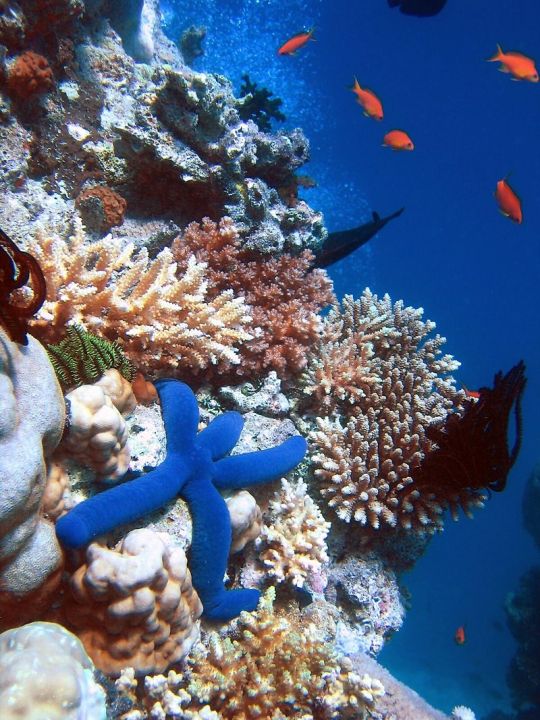
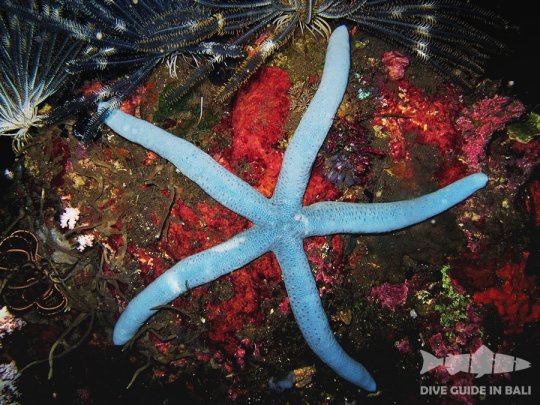
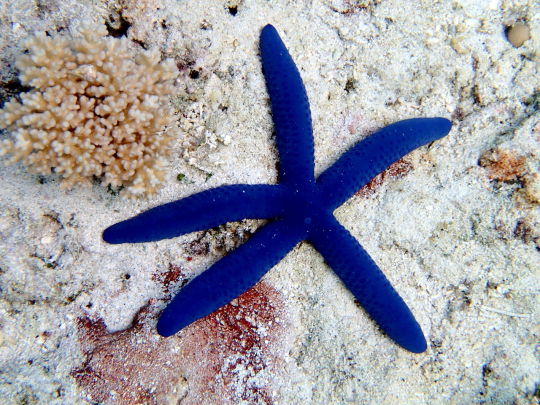

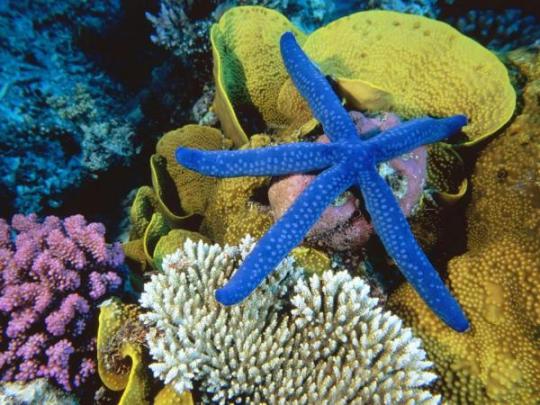




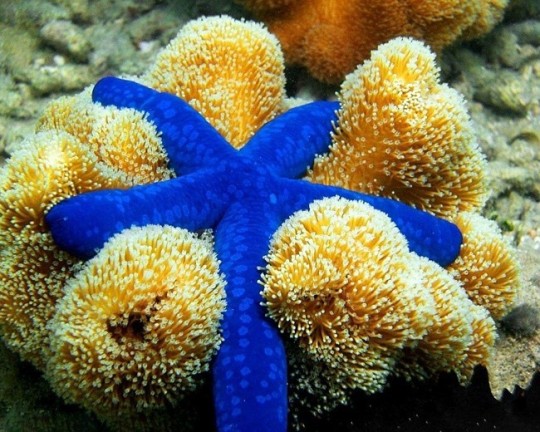
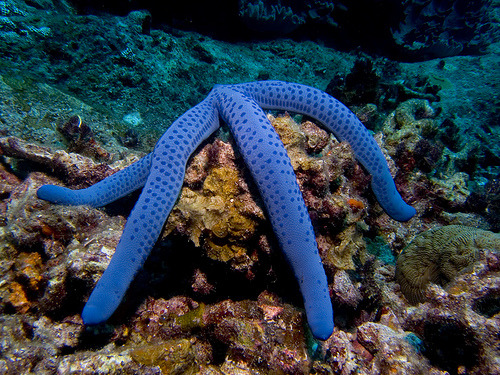
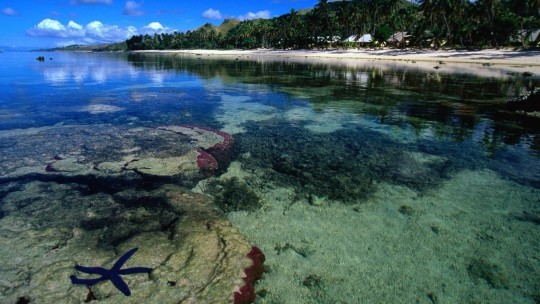
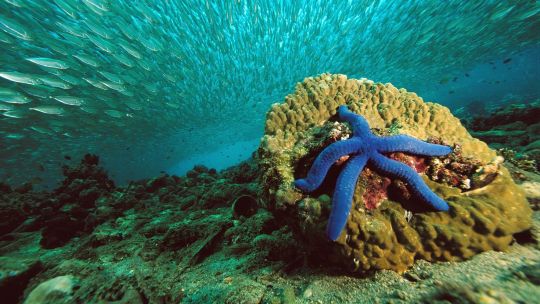
Морская звезда линкия синяя
Linckia Laevigata (: Blue star fish)
Ярко-синяя морская звезда (пигмент линкиацианин) с пятью длинными цилиндрическими лучами. Вырастает до 30—40 см в диаметре. Ярко окрашенное тело защищено твердым известковым скелетом, состоящим из подвижных пластин. Еще одной защитой морской звезды являются шипы, бугорки или иглы, расположенные на верхней стороне тела.. Обитает в водах от западной части Индийского океана до юго-восточной Полинезии в Тихом океане.
Эта звезда встречается в закрытых лагунах, на рифовых плато и на внешних стенках рифов, от приливно-отливной зоны до глубин 25-30 м, хотя иногда встречается также и на глубине до 50 м. Особи, обитающие на мелководье, обладают лазурной или сиреневой окраской, иногда с более темным крапом. Звезды с больших глубин обычно окрашены не так ярко, они бывают сероватых, желтоватых или розоватых оттенков.Предпочитает жить поодиночке, ведя преимущественно ночной образ жизни. В отличие от других родов морских звезд, разм��ожается особым бесполым способом. Самопроизвольно отломившийся луч отползает в сторону, и из него развивается новая морская звезда. У материнской особи на месте утерянной руки вырастает новая.
A bright blue starfish (linkiacyanin pigment) with five long cylindrical arms. Grows up to 30-40 cm in diameter. The brightly colored body is protected by a hard calcareous skeleton consisting of movable plates. Another defense of the starfish is the spines, tubercles or spines located on the upper side of the body. It lives in waters from the western Indian Ocean to southeastern Polynesia in the Pacific Ocean.
This star is found in enclosed lagoons, on reef plateaus and on the outer walls of reefs, from the intertidal zone to depths of 25-30 m, although sometimes also found at depths of up to 50 m. Specimens found in shallow waters are azure or lilac in color , sometimes with darker specks. Stars from great depths are usually not so brightly colored; they are grayish, yellowish or pinkish. They prefer to live alone, being predominantly nocturnal. Unlike other genera of starfish, it reproduces in a special asexual way. The spontaneously broken off ray crawls to the side, and a new starfish develops from it. The maternal individual grows a new one in place of the lost one.
Источник:/allviet.ru/animals/blue-star-fish.html,
telegram Океан, http://akvariumnye-ribki.ru/?do=shop&item=3569,
/aquastatus.ru/viewtopic.php?t=25515,
/ru.wikipedia.org/wiki/Линкия,
http://ru.diveguideinbali.com/news/19-interesnye-fakty-morskie-zvezdy.html,
/akvarium-moskva.ru/akvariumnye_obitateli/morskie-zvezdy.html,
akvarium.org/invertebrates/asteroidea/linckia-laevigata/,
/ru.wallpaper.mob.org/pc/image/animal-starfish-205649.html
#video#animal video#marine life#marine biology#nature#aquatic animals#underwater#echinoderms#starfish#ocean view#ocean#waves#reef#seaweed#sand#animal photography#nature aesthetic#видео#фауна#природнаякрасота#природа#океан#иглокожие#морская звезда#Линкия#волны#риф#кораллы#водоросли#песок
655 notes
·
View notes